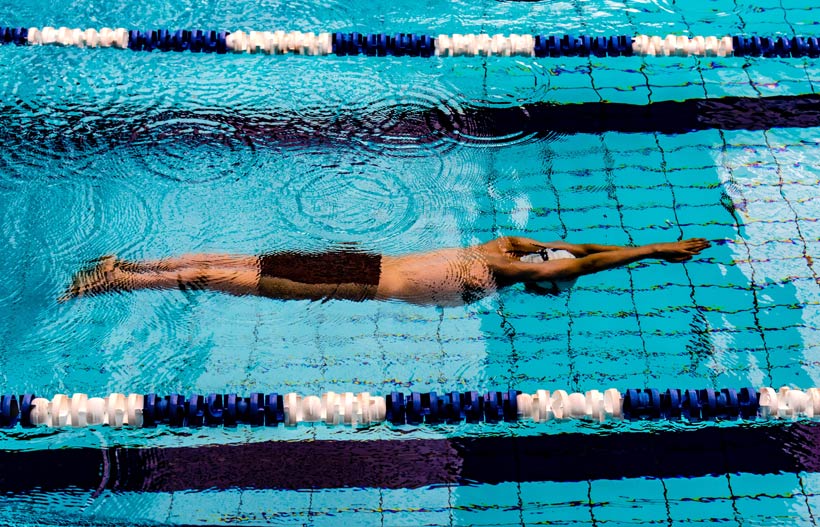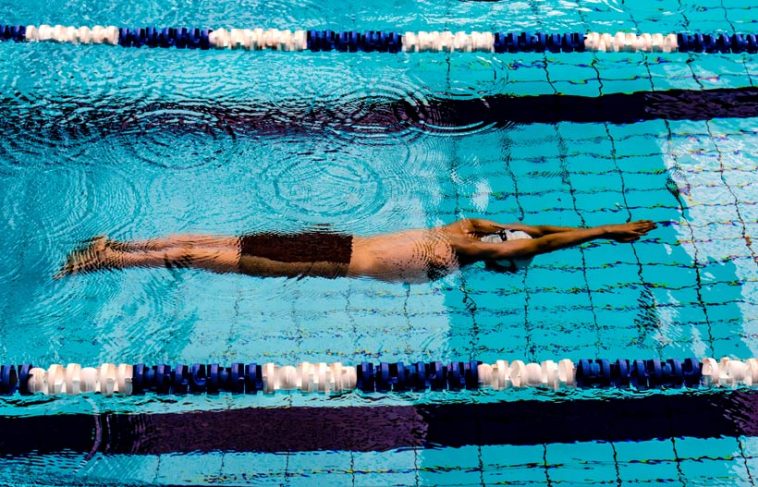- Like
- SHARE
- Digg
- Del
- Tumblr
- VKontakte
- Flattr
- Buffer
- Love This
- Save
- Odnoklassniki
- Meneame
- Blogger
- Amazon
- Yahoo Mail
- Gmail
- AOL
- Newsvine
- HackerNews
- Evernote
- MySpace
- Mail.ru
- Viadeo
- Line
- Comments
- Yummly
- SMS
- Viber
- Telegram
- JOIN
- Skype
- Facebook Messenger
- Kakao
- LiveJournal
- Yammer
- Edgar
- Fintel
- Mix
- Instapaper
- Copy Link

Did you know that aquatic therapy is a gentle but an effective way of conditioning your joints? Emerging research continuously shows that swimming is great for your health. According to Better Health, swimming can provide many of the benefits of conventional exercise without the high impact on your joints.
In a study by the New York University, it was found out that swimmers had the following advantages over non-swimmers:
- Lower heart rate
- Maintaining a healthy weight
- Increased endurance
- Strengthened and toned muscles
Swimming can also be a good exercise for heart patients. With swimming, you get to engage most of the body parts with an emphasis on the upper body. Those who are still healing from open surgery are discouraged from taking part in swimming exercises.
A Simple Way to Exercise
According to Dr. Gordon, an expert in cardiac rehabilitation at Cleveland Clinic, people who are not in great condition or are unable use other means of exercise can take up swimming as an alternative. People who suffer from joint pains and arthritis are encouraged to swim regularly as a form of exercise that can just be as effective as going on the treadmill. “You can take a water aerobics class,” suggests Dr. Blackburn. “You can do water walking, both shallow and deep-water.”
Swimming and Potential Causes of Joint Pains
With swimming, you get to prevent the potential causes of joint pains. Active exercise and moving the knee provides muscle strength and is recommended for the fluid which cushions the knee joints. It is also among the very exercises that don’t exert pressure on the joint thus does not cause any sort of damage.
Cardiovascular Workouts
Cardiovascular muscles need to be strengthened and one of the best ways of doing so is by swimming regularly. The cardiovascular workouts will ultimately have a positive effect on your joints. Our day-to-day activities will have an impact on our joints. Swimming should be seen as a prevention mechanism and not as the absolute cure.
Relieving Stress
Stress has a tendency of increasing chronic pain which can be felt in the muscles and the joints. Swimming is therapeutic and is known to be an effective stress reliever. Some people will swim solely for relaxation. What happens during winter when you can’t go out but you still fancy a swim and you live in Montgomery? The solution could come in the form of custom pools in Montgomery. It could be a heated indoor pool that can be used at any time of the year. The solutions are limitless and you shouldn’t let winter interfere with your swimming routine.
Multifarious Exercise
According to Dr. John Skeredos, swimming doesn’t have to be limited to laps. There are several other water-based activities which can be as effective as swimming. If you’re looking for a water-based exercise that will have a less impact on the skeletal system can try water aerobics. In-pool stretching or deep water walking could also do the trick. Water is effective because the resistance is gentle compared to other forms of exercise.
There are specialists who focus on water exercises as far as joints are concerned. It might be a good idea to talk to your trainer before you start swimming exercises to help with the joints. They will recommend using water weights, kickboards, and hand-held paddles for a more effective water-based exercise routine.
Side Health Benefits
Apart from having an impact on exercising joints, swimming has been shown to improve blood circulation and breathing. It also lowers the heart rate which helps in maintaining healthy blood pressure. Combining aerobics, muscle stretching, and muscle strengthening can significantly improve one’s health and quality of life. This makes for a holistic workout routine without having to spend hours in the gym to achieve the same result.
Helps with Arthritis
Arthritis is usually the result of inflammation of one or more joints. Swimming can help in providing relief from pain coming from aggravated joints. Buoyancy from the water is subtle with the pressure that it exerts on the skeleton system. You will not have to carry extra weight since you’re already submerged in water which is relieving for the joints.
Warmer water will be more effective for those suffering from arthritis since it helps in loosening stiff joints. The muscles automatically adapt to working harder since water is 12 more times resistant although the impact is not easily felt. It should be noted that the deeper you go in the water, the harder the workout.
Before you consider swimming, you need to:
Know How to Swim
Sometimes just walking around the pool may not be enough. You need to enjoy the whole experience. The good news is you can easily learn how to swim. It only takes a couple of lessons and a lot of practice. The practice sessions can also form part of the exercise.
Warm Up Before Swimming
Warming up helps in stretching your muscles and joints. The aquatic therapy will be more effective when the joints have been stretched.
Seek medical attention
This is particularly true if you haven’t exercised for long and you’re experiencing back pains. The doctor will be able to determine the root cause of the problem and recommend the right treatment.
About Shannon Clark
Shannon holds a degree in Exercise Science and is a certified personal trainer and fitness writer with over 10 years of industry experience.

